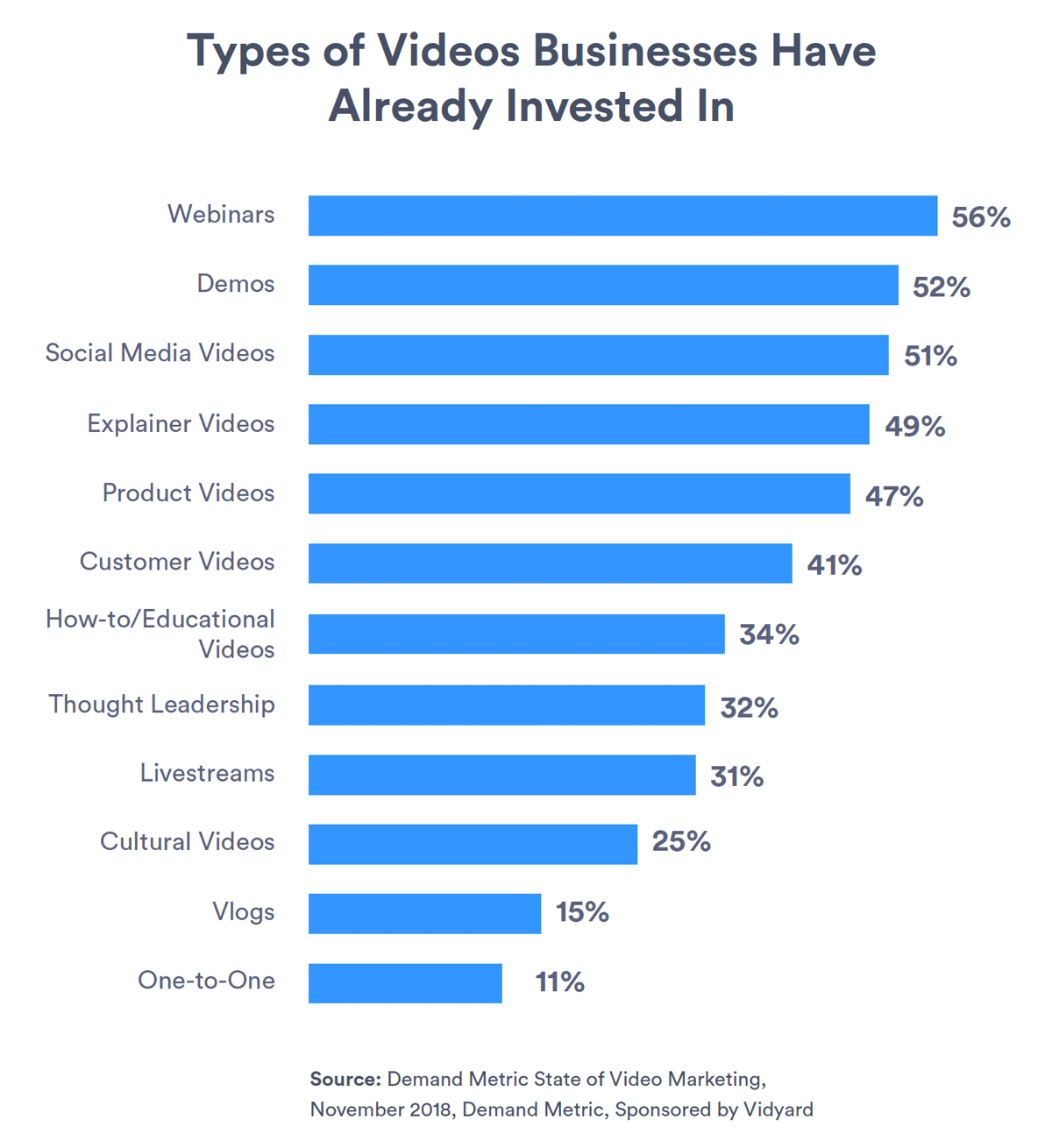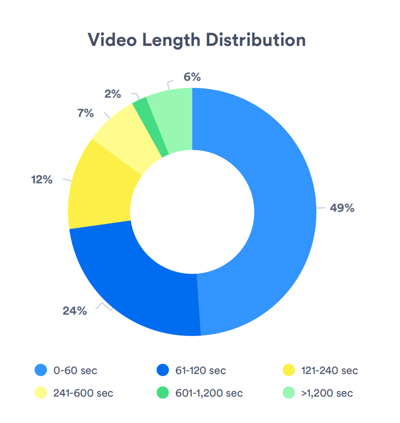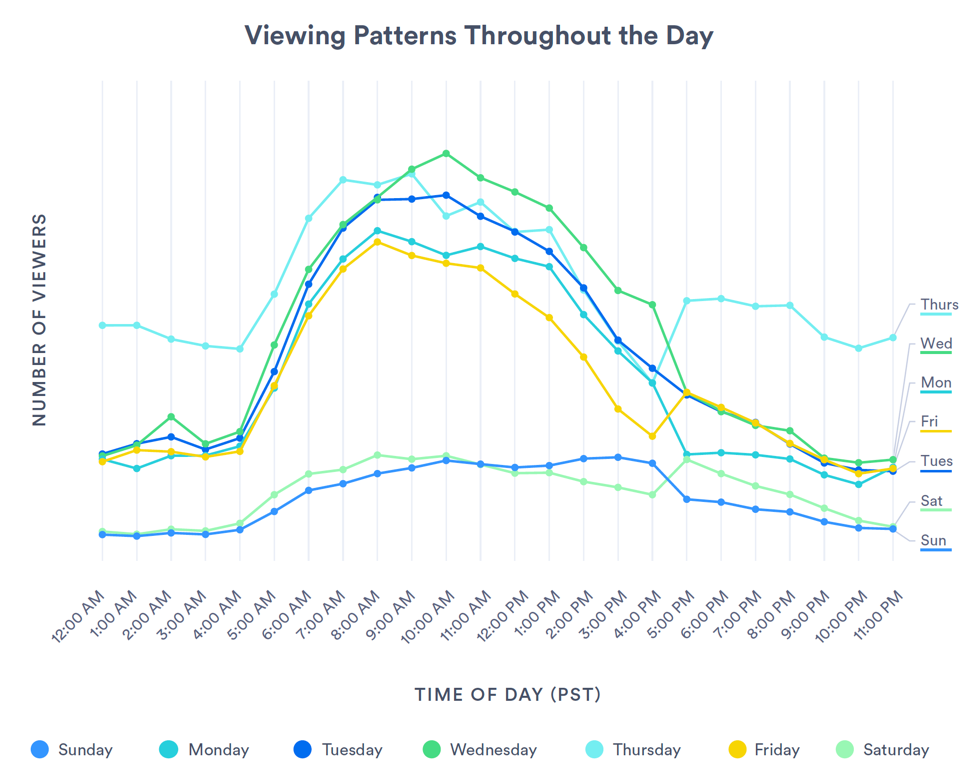Topic:
Video Marketing
It would be hard to overestimate the power of video in today’s digital marketing world. If content is king, then video content is the emperor. We recently saw the 2019 Video in Business Benchmark Report. We thought that our readers would benefit from the important results so we are abstracting the important points in this article.
 Consider this video marketing statistic about learning preference: when faced with a choice of either text or video to learn about a product or service, 72 percent of web page viewers prefer video, according to research by production company Wyzowl. A benchmark report by video platform developer Vidyard reveals that almost one-third of millennials -- the largest generation in the US workforce -- prefer video-based content over other formats when researching a new B2B product or service. But wait, it gets even better – 79 percent of study respondents claimed a brand video convinced them to make a purchase. Clearly, video gets through to prospects in a way no other format can.
Consider this video marketing statistic about learning preference: when faced with a choice of either text or video to learn about a product or service, 72 percent of web page viewers prefer video, according to research by production company Wyzowl. A benchmark report by video platform developer Vidyard reveals that almost one-third of millennials -- the largest generation in the US workforce -- prefer video-based content over other formats when researching a new B2B product or service. But wait, it gets even better – 79 percent of study respondents claimed a brand video convinced them to make a purchase. Clearly, video gets through to prospects in a way no other format can.
What makes video marketing such a powerful tool for both B2C and B2B marketers is the way it engages with viewers on several levels. As an impactful, effective marketing strategy component, video offers a number of benefits, including:
Video content produces higher conversion rates According to digital marketing consultant HubSpot, including video on a landing page can increase conversions by 80 percent.
Video content generates improved search engine results Google, Bing, and other major search engines are all looking for content that engages viewers. Properly optimized video is the one tool that attracts and keeps viewers longer than anything else on a web page, improving that page’s value and boosting its search engine ranking. YouTube, one of the world’s most popular video-sharing platforms, is actually the second-largest search engine behind Google, making it a must for video-posting.
Video content boosts social media impact Over 90 percent of mobile video consumers share video with others. Promoting a video via social media can significantly increase visibility and sharing, increasing your marketing reach substantially.
Video content builds trust Content marketing is based on trust and creating long-term relationships. Effective marketing videos present products in a conversational form, enabling savvy marketers to engage in a personal, one-on-one relationship with viewers, gaining their trust and breaking down barriers to convert leads into prospects and prospects into customers.
 Video is ideal for explaining things Video animation is especially well-suited for explaining complex topics and concepts – it’s the perfect combination of entertainment and education. Animation enables the video producer to creatively express ideas and explain things in a way that no text or spokesperson can.
Video is ideal for explaining things Video animation is especially well-suited for explaining complex topics and concepts – it’s the perfect combination of entertainment and education. Animation enables the video producer to creatively express ideas and explain things in a way that no text or spokesperson can.
If you’re a B2B marketer with an interest in adding the power of video to your online marketing efforts, there are a few insights I’d like to share to help you make the most of your investment:
The most popular online video formats are webinars, product demos, and social media videos. These primarily short-form videos are ideal formats for inclusion on websites, in social media, and on landing pages. According to the Vidyard report, webinars are the most popular format, with almost 75 percent of marketing and sales professionals saying they’re one of the best ways to generate qualified leads.
B2B marketers are especially enthusiastic about social media videos because almost 95 percent of survey respondents claimed to have gained customers from videos posted to social media platforms.
Businesses are using video throughout the customer journey — not just at the top of the sales funnel. Significant use of explainer, product, and customer videos suggests that B2B marketers recognize the power of video to explain to potential customers what their products or service do, what they offer, and how a product or service can help them.
Most videos are still viewed on desktops, but mobile viewing is growing rapidly. While mobile has experienced exponential growth in many areas—more than 75 percent of worldwide video viewing is mobile, according to eMarketer—it’s still way behind desktop when it comes to video views for business content.
While it’s important to plan for making content accessible and responsive across a variety of devices and screen sizes, it still makes sense to design for desktop first, where businesses can take advantage of a wider range of features to make the viewing experience compelling. Greater bandwidth and hi-def video recording and monitors available in a desktop environment make an even stronger argument for desktop production.
So who’s making all these videos being viewed on desktops and smartphones? It should come as no surprise that the leading producers are high tech, professional services, media, entertainment, and communications companies. And they’re producing a LOT. Businesses in those industries published an average of more than 300 new videos in 2018 – almost one per day.
This rate of production suggests that they’re experimenting with different levels of production and creating videos for different uses. Sales and support team use of video at some companies in certain industries can also drive up the average; for example, reps in equipment and appliance companies might tend to create a higher volume of simple DIY videos to help new customers use their products.

85 percent of video marketers use analytics to fine-tune their topics and production. Now that growing numbers of businesses are making video part of their strategy, they’re discovering that it’s important to track the effectiveness of their efforts. Analytics help provide the context and insights needed to know what’s working and what isn’t, what changes need to be made to improve things such as engagement or conversions, and what kind of return-on-investment (ROI) the organization is getting from video marketing.
The increase in marketers using analytics suggests that more businesses have recognized the value of deeper and more comprehensive video analytics to the success of their larger marketing strategy. They’re willing to invest in the tools and training needed to use analytics for leveraging viewer data to gain insight into video effectiveness and how they can improve it.

All of this points to the power of video as a compelling storyteller. When all is said and done, all marketing boils down to the simple process of telling a story about a brand, a product, or a service and how it can improve the life and wellbeing of the purchaser.
The sights and sounds contained in video engage the viewer in a way no other format can. Video stirs the imagination, stimulates thought processes, and creates an emotional response that can trigger a lasting relationship between buyer and seller.
 Bristol Strategy is a Hubspot Gold Partner and experienced digital marketing resource for small businesses and large enterprises. Contact us today to learn more about how to successfully use video for your business. We’d be happy to help.
Bristol Strategy is a Hubspot Gold Partner and experienced digital marketing resource for small businesses and large enterprises. Contact us today to learn more about how to successfully use video for your business. We’d be happy to help.
Ask us about our unique approach that creates a full-funnel "inbound" engagement model for your business that attracts and converts digitally engaged prospects.